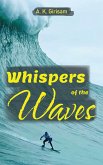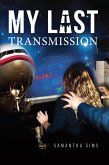a universal organizational system based on human rights, inspired by
principles of consciousness found in the Hindu chakras, Egyptian Tarot,
and Declaration of Independence. Two: Colorful confrontations and
anecdotes from the 40 years Boaz takes to complete a book on the seven
rights.
The trauma of a marital breakup leads attorney Dennis Boaz to search for
self-awareness and purpose in Berkeley's New Age subculture of the early
seventies. The search ultimately culminates in Boaz's creation of a
comprehensive body of human rights and an an organizational system,
which Boaz calls, the "Seven Rights Schematic."
Boaz demonstrates how the schematic would add balance and
comprehensiveness to the educational curriculum; how it would restructure
business to favor the worker in salary, multi-career opportunity, fairness,
and ownership; and, how the schematic, after a necessary Article Five
Constitutional Convention, would enable government to be more
democratic, efficient, fair, and balanced in the choice and distribution of its
resources.
Boaz suggests that the seven rights may answer the riddle to what is
sealed behind seven seals of the Book of Revelation. He notes that
because of his name and astrological sign, he fits the biblical symbolic
description of the person who is to "open the book and loose the seven
seals thereof."
In a lively 40 year span, Boaz pursues the "right" way to present his book.
He highlights "battles" between himself and different authorities in San
Francisco, Salt Lake City, Guahan (Guam), and Saipan. Included are
Boaz's misadventurous and sometimes comical attempts to promote an
early seven rights manuscript: a marijuana "smoke-in" protest in San
Francisco's federal building, and a successful plea to the Utah Supreme
Court for his client's (Gary Gilmore) execution-an effort, that Boaz later
admits, was morally wrong. The Gilmore episode also results in some
personal and memorable anecdotes with Boaz and celebrities of the time;
including Norman Mailer, Geraldo Rivera, Dr. Jack Kevorkian, Tommy Lee
Jones, and Rosanna Arquette.
Dieser Download kann aus rechtlichen Gründen nur mit Rechnungsadresse in A, B, BG, CY, CZ, D, DK, EW, E, FIN, F, GR, H, IRL, I, LT, L, LR, M, NL, PL, P, R, S, SLO, SK ausgeliefert werden.









